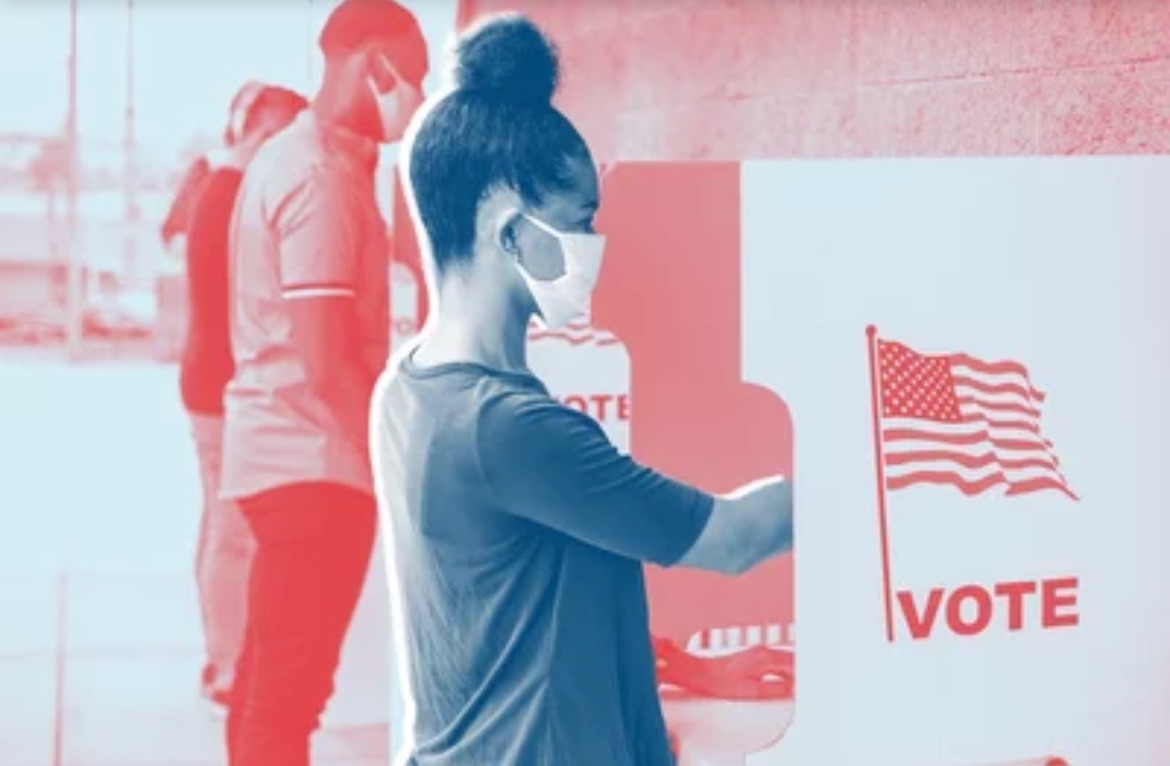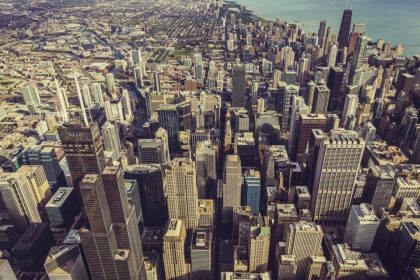You can (and should!) still make your voice heard this year—it’ll just take a little more planning.
By Tracy Collins Ortlieb October 26, 2020
Like so much else in our daily lives, the novel coronavirus is changing the way many Americans plan to vote this year. With nearly 70,000 new COVID-19 cases each day, per the Centers for Disease Control and Prevention, many Americans are worried about their ability to cast their ballot while also protecting themselves from the virus.
It’s a valid concern; especially since this pandemic—the worst the US has seen since the 1918 Spanish flu—is happening at a pivotal moment in US history. To date, more than 225,000 people have died from the virus in the US, with COVID-19 serving as a backdrop to months of civil unrest, fueled by centuries of systemic racism.
“We’re days away from the most important presidential election in our lifetime,” Cyrus Shahpar, chief science officer at a global public health initiative known as Resolve to Save Lives, said in a recent virtual press conference for Covid Exit Strategy. “We all recognize people need to vote and need to be safe doing so, and we can’t compromise on safety,” he said. “We can vote safely, even if overall local cases of COVID are rising.”
He’s right: Many states have gone to great lengths this year to make voting safer and more accessible—through mail-in voting, absentee voting, and early voting—than in years passed. Even in states that still largely rely on in-person voting on Election Day, experts say there are ways to minimize your risk while also exercising your civic responsibility. Here’s what you need to know about making your voice heard, and staying safe while doing so.Have you voted (safely!) in the 2020 election yet?
Request a mail-in or absentee ballot
Just as voting has changed this year, the terminology used—absentee voting versus mail-in voting—has changed a bit too. Typically, absentee voting refers to the system used for people in a state to vote when they’re unable to be there in person—and each state normally offers absentee voting, though rules vary as to who is able to participate. Mail-in voting, on the other hand, normally references the policies set in place by a state that allows all citizens to vote by mail through mail-in ballots that are automatically sent to all voters.
Due to COVID-19, however, states have changed things a bit. According to NPR, 10 states currently have a policy in which mail-in ballots were automatically mailed to all registered voters. Another 35 states allow no-excuse mail-in ballot requests—14 of which automatically sent mail-in ballot applications to voting residents—and the remaining five states mandate an excuse for a mail-in ballot this year.
“Right now the majority of states where an excuse was needed to vote by mail have qualified coronavirus as an excuse, or have outright waived that provision,” Sylvia Albert, director of voting and elections at Common Cause, a non-partisan, grassroots organization dedicated to upholding democracy, tells Health. “There are five states that have not: Texas, Tennessee, Indiana, Louisiana and Mississippi. In those states you’d have to be diagnosed with coronavirus or otherwise qualify under a very narrow window of excuses in order to vote by mail.”
If you do live in a state that allows voting by mail, however, it may be a good idea to take advantage of that option if you’re concerned about contracting COVID-19, or if you’re a high-risk individual. Even Anthony Fauci, MD, director of the National Institute of Allergy and Infectious Diseases, suggested mail-in voting as an alternative to our typical voting system this year.
“I mean, obviously if you’re a person who is compromised physically or otherwise, you don’t want to take the chance,” Dr. Fauci said during National Geographic’s “Stopping Pandemics” event. “There’s the situation of mail-in voting that has been done for years in many places. So there’s no reason why we shouldn’t be able to vote in person or otherwise.”
Because it’s also difficult to predict the future—especially during a pandemic—mail-in voting can act as a safeguard against any unforeseeable health issues. “Another reason to vote early is, just in case closer to Election Day you don’t feel well, at least you’ve already cast your vote,” Annabelle de St. Maurice, MD, MPH, co-chief infection prevention officer for UCLA Health, said in a press release, urging the benefits of mail-in voting.
If you are planning on mailing in your ballot, just make sure you pay special attention to your state’s policies and deadlines for registration and requesting a ballot. In addition to that, each state sets its own deadlines for postmarking the ballot and the cutoff for when the ballot must be received.
Vote early, and in person
Most states and US territories allow early voting or in-person absentee voting, but the time period for early voting varies from state to state, according to the National Conference of State Legislatures (NCSL). Early voting can begin as early as 45 days before the election, and end as late as Election Day or the day before. Of the states that allow early voting, 24 states and the District of Columbia, also allow some early voting on weekends.
Though it won’t necessarily offer as much protection from COVID-19 as would mailing in a ballot, early voting may still provide some people with a safer experience, with fewer people at the polls at any given time. But the longer the polls are open—and the more people who use early voting to cast their ballots—the more poll workers themselves are put at risk.
The record influx of people seeking to vote early in person means a sharp increase in the number of needed poll workers, Robin Carnahan of US Digital Response (USDR), said a virtual press conference. USDR, a non-partisan organization, works to pair pro bono technologists with governments to respond to the COVID-19 crisis. Carnahan added that poll workers—a critical component of free elections—share an average age of 72, a group at high risk of COVID-19’s most debilitating impact.
“We need people to fill poll worker positions for those who feel unsafe doing so this year,” she said. “US elections call for clarified election results and clear communication on election night. The trust in this democratic system is foundational to trust in election results.”
Younger people, who are less susceptible to COVID-19’s worst outcomes, are being encouraged by state officials to become poll workers. You must be a registered voter prior to taking the paid position, and election officials are still looking for help. You can sign up to work the polls in your area through Power the Polls. Potential poll workers can look up the requirements and even the training materials in your state or jurisdiction through the Fair Elections Center.
Stay safe at the polls on election day
Mail-in ballots will reduce the surge on voting sites, but if you’re not sending a mail-in ballot or voting early, experts say there are still ways to stay healthy.
“We want to make sure there are accessible and secure mail-in ballots, but also safe in-person voting sites,” Shahpar said. “It’s not rocket science when you think about making safe polling a reality. Just as with a grocery store or another location we visit every day: How do we engineer particular event, in this case voting, to be safe?”
Shahpar equates voting in person to the COVID-19 risk calculations we’ve been making daily for the last few months: Taking into account our number of human interactions, their duration, their proximity, and whether we’ve undertaken personal behaviors like mask wearing and hand washing to reduce exposure.
Many states also offer curbside or “drive-thru” voting to senior citizens and the disabled. In this practice, a poll worker brings all relevant materials, including a ballot, to the voter’s car. But on Friday, the Supreme Court overturned a lower court ruling that allowed curbside voting in Alabama, spurring outrage among disability-rights activism groups; check with your state’s policies before casting your ballot.
“If there are going to be lines, we’ll make sure they’re distanced,” Shahpar said. “There should be line and crowd management, one-way foot traffic, modified layouts, clear signage. Less time at the polling location is important. Reducing environmental risks through well-ventilated indoor areas, or outdoor areas if at all possible, as well as cleaning and disinfecting surfaces and equipment.
“And of course enforcing personal behaviors we should be practicing everywhere, such as the CDC’s ‘Three W’s’: wearing a mask, washing your hands, and watching your distance. These things are critical for voters and poll workers.”
Per the CDC’s guidance, voters should also take the following steps to ensure their own health and safety at polling sites:
- Wash hands before and after entering the location
- Wear a mask
- Continue to social distance six feet (about two arms’-length measures) from others
- Cover coughs and sneezes with a tissue or the inside of an elbow
- Use alcohol-based hand sanitizer containing at least 60% alcohol frequently, especially after touching surfaces frequently touched by multiple people door handles or voting machines
“People typically spend, on average, just a few minutes voting, and we get concerned more often about activities that last longer than 15 minutes,” said Dr. de St. Maurice, who is working with the UCLA Voting Rights Project. “So when you’re up there voting, that’s actually kind of a low-risk activity.”
Other potential issues at the polls
While COVID-19 is at the forefront of everyone’s minds this while voting, people may also face other health concerns at the polls. Individuals undergoing a gender transition, for instance, may carry a driver’s license photo that doesn’t match their current appearance. “Legally your gender identity does not need to match your license,” Albert says. “You can’t be turned away if gender identity doesn’t match as long as a poll worker can identify that your license belongs to you.”
As for those who are health aids or require the assistance of one, Albert explains that all voters are allowed assistants to vote, be it in the form of a translator, a health aide, or a person who helps a voter read the ballot because of poor eyesight. Per law, that aide cannot, however, be a boss or union representative—anyone who may have undue influence over the vote). “Otherwise,” she adds, “this is federal law. No state can say it’s against state law — you are fully entitled to voting assistance.”
Despite the fears that escalate with the nation’s COVID-19 case rates, Shahpar said voters and poll workers collectively practicing CDC guidelines will make for a safe in-person voting experience.
“There is guidance out there, and we can do this safely if this guidance is followed,” he said. “It’s critical that election officials ensure sites are safe: that there’s ample equipment, that hand sanitizer is being offered, and that people understand they need to remain vigilant about maintaining best practices to protect themselves from becoming infected.”
Published at Health




